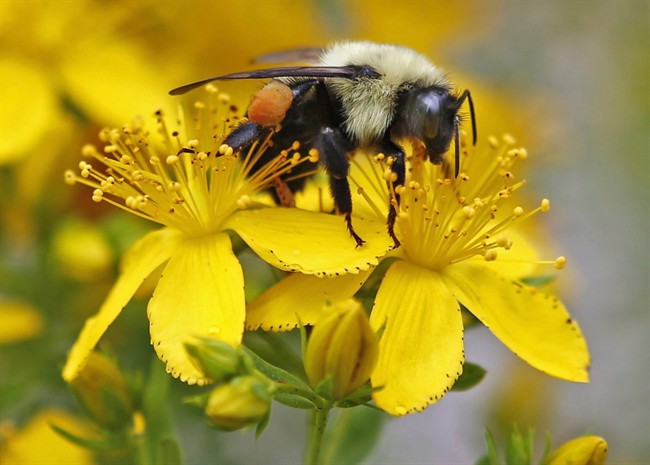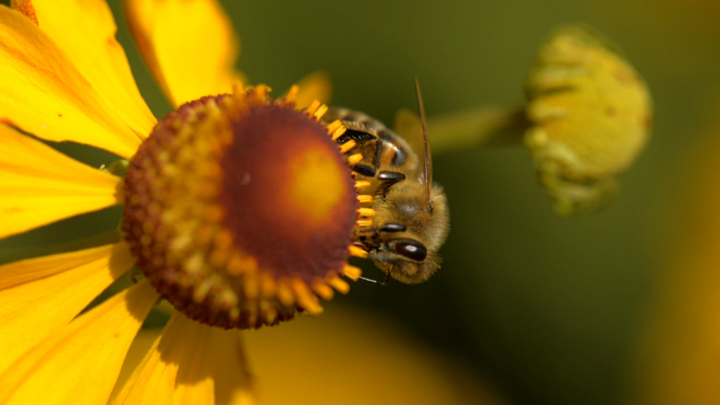Around the world, bee populations are declining due to a variety of factors, including neonicotinoid pesticides, loss of habitat and varroa mites.

While some of these things may be out of your control on a grand scale, on a smaller scale, you can help the bees. Humans are becoming more urban and bees are losing their habitat. You can create a bee-friendly environment, allowing them to reclaim at least a small part of their habitat.
READ MORE: How the pesticide believed to be killing the bees could be affecting humans
Quick bee facts
You might be wary of attracting more bees to your yard for fear of being stung.
But according to Laurence Packer, professor of biology at York University’s Faculty of Science, most of what people know about bees is wrong, including their stinging abilities.
Packer told an audience at the Symposium on Impacts of and Alternatives to Systemic Pesticides at York University in Toronto that more than half of all individual bees don’t sting. That’s because the males don’t have stinger; they’re actually part of a complicated egg-laying device utilized by, obviously, only females.
Here are some other neat facts:
- Most bees don’t live in hives; instead, they live in nests in the ground or trees, etc.
- Domesticated honey bees were introduced into North America
- There are 20,000 described species in the world and seven families of bees
- There are about 850 species of bees in Canada
- Only about 36 species of bees in Canada produce honey
How you can help
Now knowing that most bees don’t even sting, it might be nice to try to give one of nature’s best pollinators (responsible for pollinating about 75 per cent of the world’s crops) a hand.

Here are just a few suggestions from Packer. (Side note: for those of you who dread gardening, this is your excuse to just let your garden go; if anyone complains, you can just tell them you’re saving the bees.)
- Allow bare patches in your yard. If you like a pristine, perfect lawn, you’re going to have to abandon that idea. Bees tend to build their nests underground. The bare patches are an ideal place for them to access.
- No woodchips! Some people don’t like the work of taking care of a small lawn, so often they’ll put down woodchips. But this prevents bees from accessing the ground and building nests.
- Leave dead stems in place. Yes, leaving brown, lifeless stems can be unsightly, but oftentimes bees will make their nests in the hollows of the stems.
- Build nest sites. You can leave piping or other such hollowed-out places for bees to access. If you’re worried about accidentally upsetting a bees’ nest that you’ve created, just make sure it’s far away from doors, windows or any areas that people — and children — might bump into.
- Build south-facing rockeries. Rocks help warm up the soil, which in turn makes it an inviting area for bees to nest.
You can do all of these or just some of them. But remember: we need the bees.



Comments